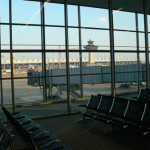 When organizations attempt to become more collaborative and innovative, many of the strategies adopted to try and encourage that kind of behaviour are rather explicit in their nature. There are blatant attempts to encourage collaborative behaviours, whether it’s having role models or installing expensive software.
When organizations attempt to become more collaborative and innovative, many of the strategies adopted to try and encourage that kind of behaviour are rather explicit in their nature. There are blatant attempts to encourage collaborative behaviours, whether it’s having role models or installing expensive software.
The world of behavioural economics suggests a much subtler approach would be more beneficial. This world suggests that as human beings, we adapt our behaviours to the environment we find ourselves in, so if you can create an environment that gently nudges people towards more collaborative behaviours, then those are the behaviours they’ll exhibit.
A good example of this was provided by a recent article in the Wall Street Journal. The article was charting the work of Danish behavioural scientist Pelle Guldborg Hansen. Of particular interest is Hansen’s work with the airline industry, but it also discusses his work in such disparate fields as healthcare and night clubs.
The article chronicles the way Hansen and his team improved the boarding process at Copenhagen airport. His team would document how people would behave in the boarding lounge, gaining an understanding of the unique behaviours of those traveling alone vs with a group.
They did this for over 500 flights to try and gain some insights into the process before they could then look to improve and smooth out the boarding of each flight. This analysis enabled them to get to work on the next stage of their project, which would hopefully make boarding considerably more efficient.
They began to alter the design of the seating area to try and prompt more passengers to sit down in the departure lounge, thus making the process more orderly. Small changes to the environment could include expanding the number of spots to encourage single travelers to sit down, with the belief that a seated traveler is more orderly than a standing one.
In addition to the departure lounge, Hansen and his team also looked at the behaviours of smokers in the airport, and in particular how they could be encouraged to get further from the entrance before lighting up. It emerged that despite telling travelers where they could not smoke, there was little information on the appropriate place to go.
So his team placed informational signs throughout the airport informing travelers both how far and in what direction their nearest smoking area was. The appropriate smoking zone was also clearly demarcated. The result was that smoking outside of these areas dropped by around half.
“The whole nudge idea is to say, look, there are all these small influences in the environment that influence our choices,” says Karsten Schmidt, a project leader who works with Dr. Hansen.
In my 8 Step Guide to Building a Social Workplace I try and focus on just these kind of environmental factors, and explore 8 specific ones that you can influence to hopefully guide employees behaviours to something more social and collaborative.
So, if you’re looking to change culture of your own workplace and promote more social behaviours, give some thought to how the environment you place your employees in is influencing their existing behaviours.